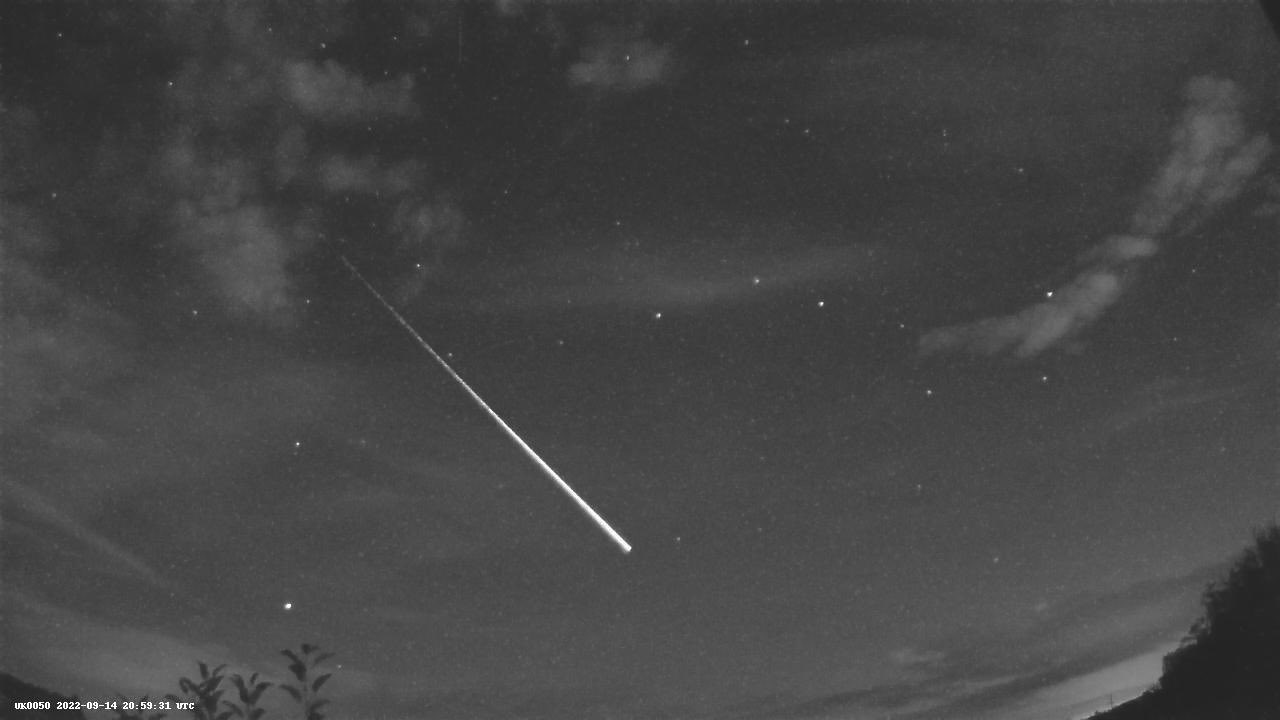Blazing fireball illuminates skies over Scotland and Northern Ireland
The bright trail of light captured imaginations all across the United Kingdom.

A bright fireball streaked across the sky late at night on Sept. 14 in the U.K..
At first, some observers thought the whizzing ball of light could have been a piece of space junk, perhaps from one of SpaceX’s Starlink satellites. But after some speedy calculations, the U.K. Meteor Network determined that the fireball was caused by a small space rock entering Earth’s atmosphere.
“We’ve analysed it from many more angles. It is definitely a meteor. Probably a small piece of an asteroid that’s broken off an asteroid. It came in at an asteroidal orbit,” John Maclean, an astronomer at the U.K. Meteor Network, told The Guardian. The U.K. Meteor Network is a group of citizen scientists who analyze footage of possible meteors using 172 cameras placed around Britain.
The meteor zipped into the atmosphere at 31,764 mph (51,1119 km/h), according to the Network.
Related: How many meteorites hit Earth every year?
Based on the meteor's angle of entry into Earth’s atmosphere, scientists at the Network suspect that the space rock plummeted at an angle that carried it over Wales, the Irish Sea and Belfast, Ireland. If the object didn’t completely disintegrate in the atmosphere, tiny meteorites may have rained down into the Atlantic Ocean near the Scottish island of Islay.
Steve Owens, an astronomer and Science Operations Manager at the Glasgow Science Centre in Scotland, told BBC News that Wednesday’s fireball was likely caused by a space rock the size of a golf ball.
Get the world’s most fascinating discoveries delivered straight to your inbox.
Video of the fireball, shared by the U.K. Meteor Network on Twitter, showed the meteor blazing in skies over Paisley, Scotland, at 10 p.m. local time.
One of the best videos of the fireball seen tonight. We are investigating to ascertain what the object was. meteor or space debris. https://t.co/Ko1lKRoPutSeptember 14, 2022
“Normally these little shooting stars burn up and everything vanishes and evaporates in the atmosphere, but the thing last night was bigger than a little bit of dust which causes normal shooting stars,” Owens told BBC News.
Meteors like the one that sparked Wednesday’s fireball aren’t uncommon on Earth, but because so much of the planet is covered by ocean, most of these fiery rocks blaze and flame out over the open sea, where humans don’t see them. In fact, NASA’s Planetary Defense Office says that small rocks like Wednesday night’s bombard Earth's atmosphere every day and simply disintegrate. Over the past 20 years, U.S. government sensors have spotted nearly 600 fireballs caused by asteroids measuring up to several meters long, according to NASA..
Both NASA and the European Space Agency monitor the skies every night for asteroids that could potentially collide with Earth. Called Near Earth Objects, (NEOs), these rocks orbit the sun just like the solar system’s planets and come within 30 million miles (48 million kilometers) of Earth’s orbit. Since NASA started monitoring NEOs in 1998, they’ve spotted more than 19,000 asteroids. Roughly half of those are larger than 460 feet (140 m). Fortunately, no known NEO poses a threat to Earth in the next 100 years, according to NASA.
Originally published on Live Science.

JoAnna Wendel is a freelance science writer living in Portland, Oregon. She mainly covers Earth and planetary science but also loves the ocean, invertebrates, lichen and moss. JoAnna's work has appeared in Eos, Smithsonian Magazine, Knowable Magazine, Popular Science and more. JoAnna is also a science cartoonist and has published comics with Gizmodo, NASA, Science News for Students and more. She graduated from the University of Oregon with a degree in general sciences because she couldn't decide on her favorite area of science. In her spare time, JoAnna likes to hike, read, paint, do crossword puzzles and hang out with her cat, Pancake.


